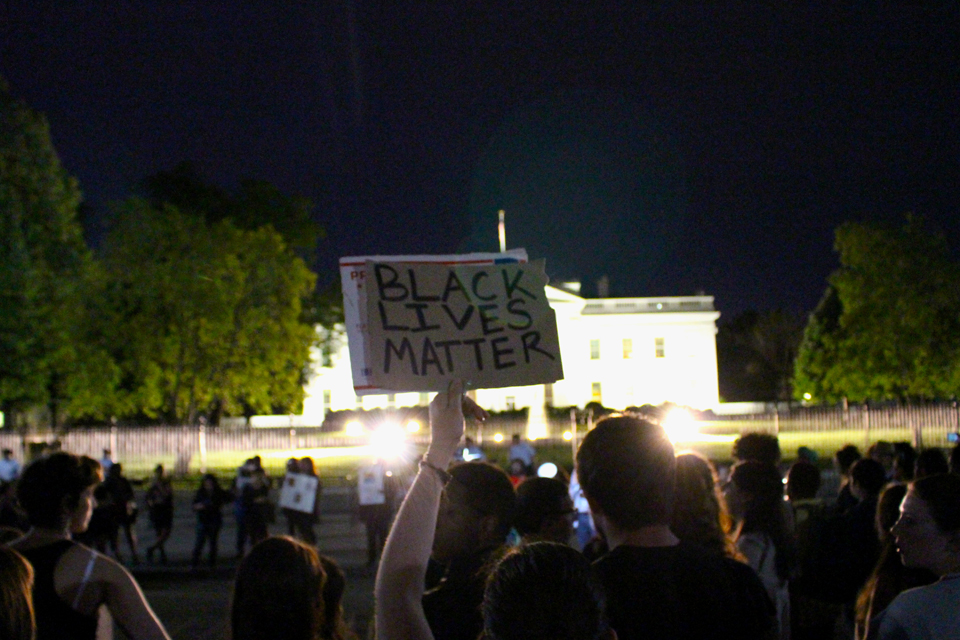By Ruth Steinhardt
Abi Cole, a rising junior at the George Washington University Columbian College of Arts and Sciences, has been making movies on her phone since she was a child. Last week, with the help of some fellow GW community members, she virtually premiered her first short film: “Between the Lines: LizAtLarge,” a profile of Liz Montague, who at just 23 last year became the first Black woman cartoonist to be published in the New Yorker. GW students can watch the film for a limited run of two weeks with the password GWU.
In the film, Ms. Montague describes cartooning as "extreme essay writing [with] a visual component."
She first reached out to the New Yorker after paging through the magazine and noticing that every cartoon was white. In the world of cartooning, Ms. Montague said, upper- to middle-class white people are still considered the default protagonists, "and everything else is niche, which gets really frustrating."
"Especially when you're from a group where we don't often get to tell our own stories, it's really easy to see when someone else is trying to tell your story for you," she said. "Representation is super important, and misrepresentation has a real human cost."
Ms. Montague published her first New Yorker cartoon in March 2019. While she is deliberate in including Black women in her art—"Everybody has their own mental default of who the main character in the world is, and I guess since I am a Black woman in the world, to me Black women are the default for me mentally," she said—her cartoons also are deliberately accessible. Bodies are ambiguously gendered and spaces are simplistic, so as not to lock the settings into a specific socioeconomic class.
"I've seen in the past cartoons where it's hyperspecific to the point where so many people are left out of the conversation," Ms. Montague said.
”Really, Liz’s own personality and her voice came through even more than what I had prepared for, which is what you would always want in an interview situation,” Ms. Cole said.
Ms. Cole created the documentary as part of her internship with Persistent Productions, a production company owned by GW alumni Megan Shea and Mike Rogers. As a graduate student, Ms. Shea was a GW Elizabeth J. Somers Women’s Leadership Program (WLP) teaching assistant, and she met Ms. Cole while Persistent was creating “20x20,” a series of 20 alumni profiles commemorating the 20th anniversary of WLP. Ms. Cole assisted with on-set production, which led to an internship.
“That project was a great way to reengage with WLP,” said Ms. Shea, B.A. ’04, M.F.A. ’07.
The professional connection isn’t the only way in which WLP has shaped her path, Ms. Cole said. Her two-semester internship was funded by WLP’s Kimberly Humphries Fellowship, named for a Mount Vernon College alumna and a strong supporter of the program. And a WLP class on women in the arts made Ms. Cole aware of the gender disparities in creative fields, which led to her determination to profile a female artist. (Many of the attendees at last week’s virtual premiere were WLP community members, including program director Mary Buckley.)
“WLP has had the largest impact on my career path and where I would like to go,” Ms. Cole said.
A Washington Post article on Ms. Montague suggested a compelling subject, so Ms. Cole reached out—and got a yes. The timing was fortuitous: Ms. Cole visited Ms. Montague’s home-slash-studio for an interview just weeks before the artist moved to Philadelphia, and only a month before the COVID-19 pandemic forced GW to move to virtual learning.
That posed post-production challenges, of course. Ms. Cole was able to use her GW-issued Adobe Creative Suite to edit from her family’s home in North Carolina, but she had to get creative to complete reshoots. At one point she filmed a Zoom call with Ms. Shea and Mr. Rogers, who were using their own equipment to get a high-quality shot.
Other challenges weren’t pandemic-specific. Since New Yorker cartoons are copyrighted, Ms. Cole had to narrow down Ms. Montague’s oeuvre to a handful of unpublished cartoons that would illustrate the topics she discussed: accessibility, diversity and the advantage of bringing a black female perspective to a medium dominated by white men.
“I learned so much about social issues and about her experience as a Black woman in a creative space,” Ms. Cole said. “It was really eye-opening and made me more interested in those kinds of issues.”
She and Ms. Shea hope this “LizAtLarge” can eventually be distributed for educational purposes, to give younger students insight into creative opportunities they might never have considered—“because kids aren’t exactly reading the New Yorker,” Ms. Cole said.



